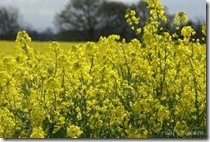Harvesting of winter barley has been very slow but is finally completed. Yields in general were very good with most farmers achieving their highest yields (9-11t/ha) to date. The higher yields were achieved where soil fertility was good, with particular emphasis on potash, magnesium and soil pH.
With the exception of farmers who had their crops sold forward, there is still considerable uncertainty about price. Many are being quoted €148-9/t at 20pc moisture but hope to get at least €160/t.
With reports of low yields and difficult harvesting conditions in many parts of Europe I would have expected stronger prices, but they seem to be determined more by financial markets than overall supply and demand.
There may also be some concern that if other cereal crops produce record yields, similar to winter barley, that there may be a storage deficit. In my opinion this is a year that grain storage will pay for farmers. However, the continued market turbulence is a cause of uncertainty.
With the completion of the winter barley harvesting we are now trying to bale and market straw. Most straw was very wet at harvest and was on the ground for more than two weeks before baling. Some straw was baled before it was fit and heated as a result.
Talk of reduced demand for straw before the harvest fuelled a downward pressure on price. The combination of harvesting difficulties with winter barley straw and likely low yields of spring barley straw, as much of it is very short, should result in improved prices once straw sales start in earnest.
Removal of straw will provide the opportunity to sow winter oilseed rape. Yields this year have been extremely good (4-5.5t/ha) and, combined with the rotational benefits, will likely result in the best margins on many tillage farms.
Merchants are finding it difficult to give forward prices for next harvest with most advising that today’s price will not hold for tomorrow.
Farmers will find it hard to commit to a contract until such time as crops are sown. The best price I could get on August 18 was €380/t with a €7 deduction for each moisture percentage point over 9pc.
Sowing should take place in late August/early September in a fine seedbed. The Department of Agriculture’s Recommended of winter oilseed rape contains two hybrid varieties Compass (101) and Flash (111) and two conventional varieties Epure (104) and Osprey (101). Compass is provisionally recommended and had the highest oil content. Flash is the highest yielding and has good oil content. Osprey establishes quickly and may establish better under poorer conditions than other varieties. Epure has very good lodging resistance.
Seeding rate will be determined on variety and seed count. Hybrid varieties should be sown at 50-60 seeds/m2 and conventional varieties at 60-80 seeds/m2.
If soil conditions are less than optimal at sowing time you should not sow but if you decide to go ahead, increase the seed rate to allow for reduced germination. Slugs are likely to be at higher levels than normal this year and control will be necessary. Cultivation options include surface cultivation, sub-soiling and ploughing.
The optimal technique is determined with a field-by-field assessment. Soils should be assessed by digging trial holes to determine soil condition and compaction. Rape will not do well in compacted soils. A top-down cultivator can work very well on easily tilled soils which are free from compaction. Soils which are compacted at surface or plough depth will benefit from the use of a sub-soiler type tined cultivator.
However, the use of these should be restricted to soils where soil moisture content is low so as to avoid risk of compaction. Both these techniques may result in increased volunteers and slug problems.
Ploughing followed by traditional cultivations will manage surface trash and shallow compaction but loses the opportunity to carry out disturbance of compaction below plough depth. Broadleaved weed control with either Butisan S or Katamaran should take place within 48 hours of sowing — collect the herbicide at the time you purchase the seed.


Deprecated: strpos(): Passing null to parameter #1 ($haystack) of type string is deprecated in /home/agriviek8Qv/agriviet.net/public_html/wp-includes/comment-template.php on line 2522